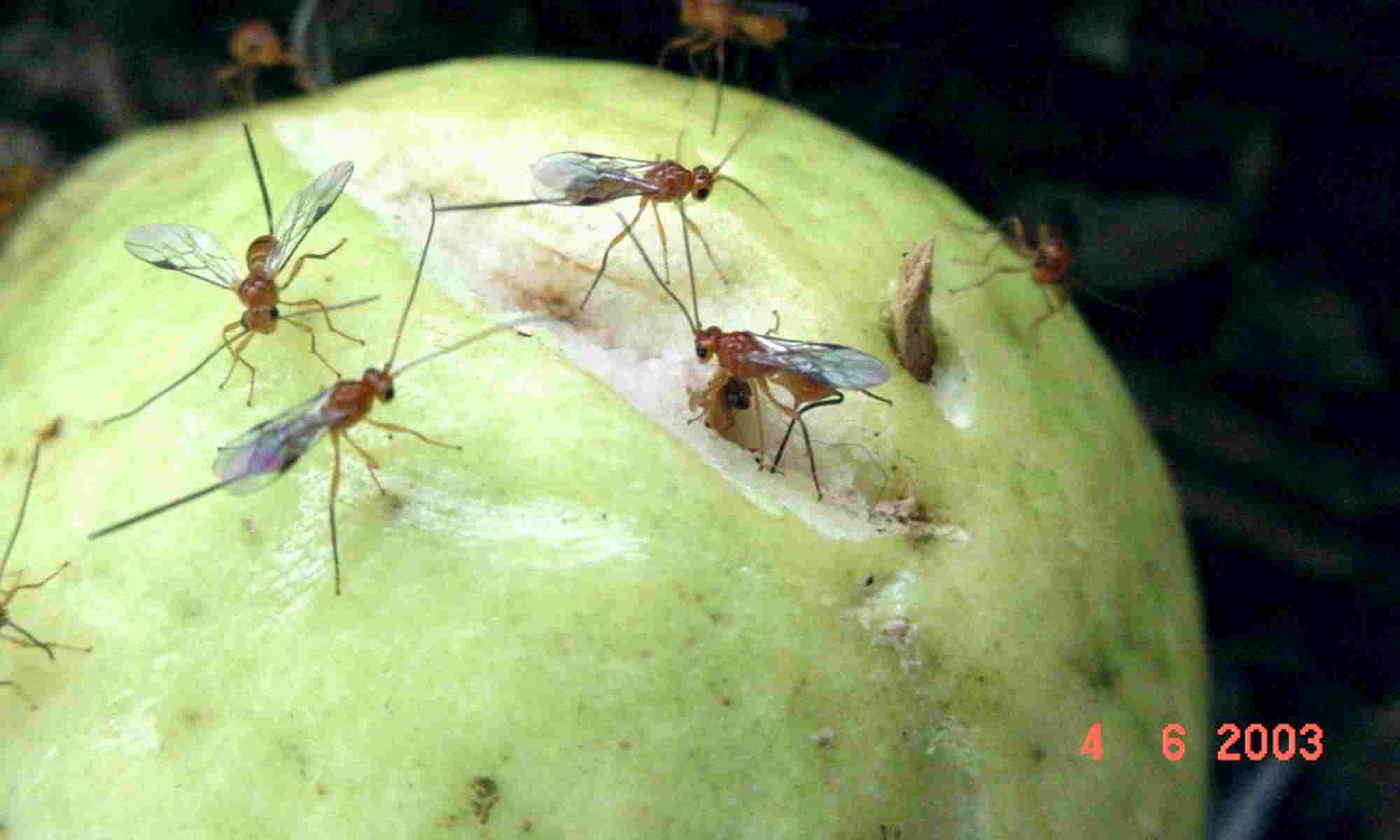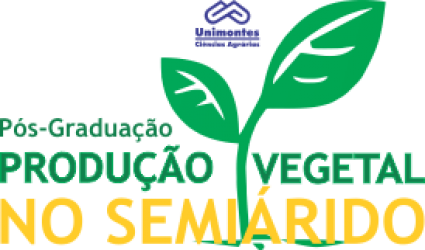- Version
- Download 20
- File Size 623.28 KB
- Create Date 14/06/2021
- Download
COSTA, Sinara Patrícia Mendes da. Atividade nematicida de óleos essenciais de plantas do semiárido mineiro. 2019. 47 p. Dissertação (Mestrado em Produção Vegetal no Semiárido) – Universidade Estadual de Montes Claros, Janaúba, 2019.
Os nematoides das galhas causam grandes perdas a diversas culturas de importância econômica. Uma das técnicas mais utilizadas para o seu controle é o emprego de nematicidas. No entanto, devido à sua alta toxicidade e possibilidade de contaminação do ambiente, fontes alternativas empregando produtos de origem natural vêm sendo bastante estudadas. Um exemplo é a utilização dos óleos essenciais que constituem uma potencial alternativa aos nematicidas químicos sintéticos. Deste modo, com o intuito de contribuir para o desenvolvimento de novos produtos nematicidas que sejam eficientes e menos tóxicos para os seres humanos e o meio ambiente, estudaram-se os óleos essenciais produzidos por plantas localizadas no semiárido mineiro, bem como o potencial e atividade dos óleos e seus constituintes químicos frente à Meloidogyne javanica. No primeiro capítulo foram realizadas coletas das plantas e as extrações dos seus óleos essenciais por meio da técnica de hidrodestilação, seguida da análise por cromatografia gasosa acoplada à espectrometria de massas (CG-EM) para a caracterização dos constituintes químicos. Posteriormente, foram realizados testes in vitro contra juvenis de segundo estádio (J2) de M. javanica em presença dos óleos obtidos e das substâncias majoritárias (citral, 2-dodecanona e 2-decanona) presentes no óleo de Cymbopogon citratus que apresentaram maior atividade nematicida. Objetivando- se determinar a concentração dos componentes químicos do óleo de C. citratus que causava morte de 50% (CL50) ou mais em nematoides, foram realizados testes preliminares em diferentes concentrações: 0, 500, 700, 900, 1100 µg/mL para o 2-decanona e 2-dodecanona. 0, 500, 550, 600, 650, 700 µg/mL para o citral. Os produtos foram diluídos em Tween® ®80 a 0.01 g mL -1. Empregaram-se como testemunhas água, Tween® (polisorbato) e carbofuran, nematicida comercial. O delineamento experimental foi o inteiramente casualizado com seis repetições. Os dados dos óleos essenciais foram submetidos análise de variância e as médias foram agrupadas pelo teste de Scott-Knott a 5%. Nos demais ensaios, as concentrações foram submetidas ao ajuste de regressão e as médias comparadas às testemunhas por meio do teste Dunnett. Tais substâncias promoveram aumento linear na mortalidade e imobilidade de J2 com aumento das concentrações e redução linear com aumento das concentrações sobre a eclosão de J2 de M. javanica. No segundo capítulo, testaram-se em casa de vegetação o óleo de C. citratus e o citral, (substância que apresentou melhor atividade nematicida, nos testes in vitro para o controle de M. javanica) na cultura de alface ‘babá de verão’ (manteiga). O delineamento foi em blocos ao acaso com seis repetições nas concentrações de 0, 260, 521, 700 e 1000 µg/mL do óleo essencial de C. citratus e 0, 500, 550, 600, 650, 700 µg/mL para o citral. As testemunhas foram água, Tween® ®80 a 0.01 g mL-1 e carbofuran. Após 35 dias de plantio das mudas, realizou- se a aplicação de suspensão contendo 4000 ovos mais eventuais J2 de M. javanica juntamente com emulsões, recém preparadas, do óleo de C. citratus e do citral. Tais emulsões foram distribuídas no solo em quatro orifícios equidistantes da planta. Os dados obtidos foram submetidos ao ajuste de regressão e as médias comparadas às testemunhas por meio pelo teste Dunnett. O óleo essencial e o citral afetam à reprodução de M. javanica em plantas de alface ‘babá de verão’ (manteiga).
Palavras-chave: Nematoide das galhas, metabólitos secundários, Lactuca sativa, Cymbopogon citratus, Lippia sp.
Nematicidal activity of essential oils from plants in the semi-arid region of Minas Gerais
The gall nematodes cause great losses to several economically important crops. One of the most used techniques for its control is the use of nematicides. However, due to its high toxicity and the possibility of contamination of the environment, alternative sources using products of natural origin have been extensively studied. An example is the use of essential oils that constitute a potential alternative to synthetic chemical nematicides. Thus, in order to contribute to the development of new nematicidal products that are efficient and less toxic to humans and the environment, the essential oils produced by plants located in the semi-arid region of Minas Gerais were studied, as well as the potential and activity of oils and their chemical constituents against Meloidogyne javanica. In the first chapter, collections of plants and extractions of their essential oils were carried out using the hydrodistillation technique, followed by analysis by gas chromatography coupled with mass spectrometry (CG-EM) for the characterization of chemical constituents. Subsequently, in vitro tests were carried out against juveniles of the second stage (J2) of M. javanica in the presence of the obtained oils and the major substances (citral, 2-dodecanone and 2-decanone) present in the oil of Cymbopogon citratus which showed greater nematicidal activity. In order to determine the concentration of the chemical components of the oil of C. citratus that caused death of 50% (LC50) or more in nematodes, preliminary tests were carried out in different concentrations: 0, 500, 700, 900, 1100 µg/mL for 2-decanone and 2-dodecanone. 0, 500, 550, 600, 650, 700 µg/mL for citral. The products were diluted in Tween ® 80 to 0.01 g mL-1 . Water, Tween® (polysorbate) and carbofuran, a commercial nematicide, were used as controls. The experimental design was completely randomized with six replications. The essential oils data were submitted to analysis of variance and the averages were grouped by the Scott-Knott test at 5%. In the other tests, the concentrations were subjected to regression adjustment and averages compared to controls using the Dunnett test. Such substances promoted a linear increase in mortality and immobility of J2 with increased concentrations and a linear reduction with increased concentrations on the outbreak of J2 of M. javanica. In the second chapter, C. citratus oil and citral (a substance that showed better nematicidal activity in the in vitro tests for the control of M. javanica) were tested in the greenhouse in the ‘babá de verão’ lettuce culture (butter). The design was in randomized blocks with six repetitions in the concentrations of 0, 260, 521, 700 and 1000 µg/mL of the essential oil of C. citratus and 0, 500, 550, 600, 650, 700 µg/mL for the citral. The controls were water, Tween ® 80 at 0.01 g mL-1 and carbofuran. After 35 days of planting the seedlings, a suspension was applied containing 4000 eggs plus possible J2 of M. javanica along with emulsions, freshly prepared, of the oil of C. citratus and citral. Such emulsions were distributed in the soil in four holes equidistant from the plant. The data obtained were submitted to the regression adjustment and the means compared to the controls using the Dunnett test. The essential oil and citral affect the reproduction of M. javanica in ‘babá de verão’ (butter) lettuce plants.
Keywords: Gall nematode, secondary metabolites, Lactuca sativa, Cymbopogon citratus, Lippia sp.

